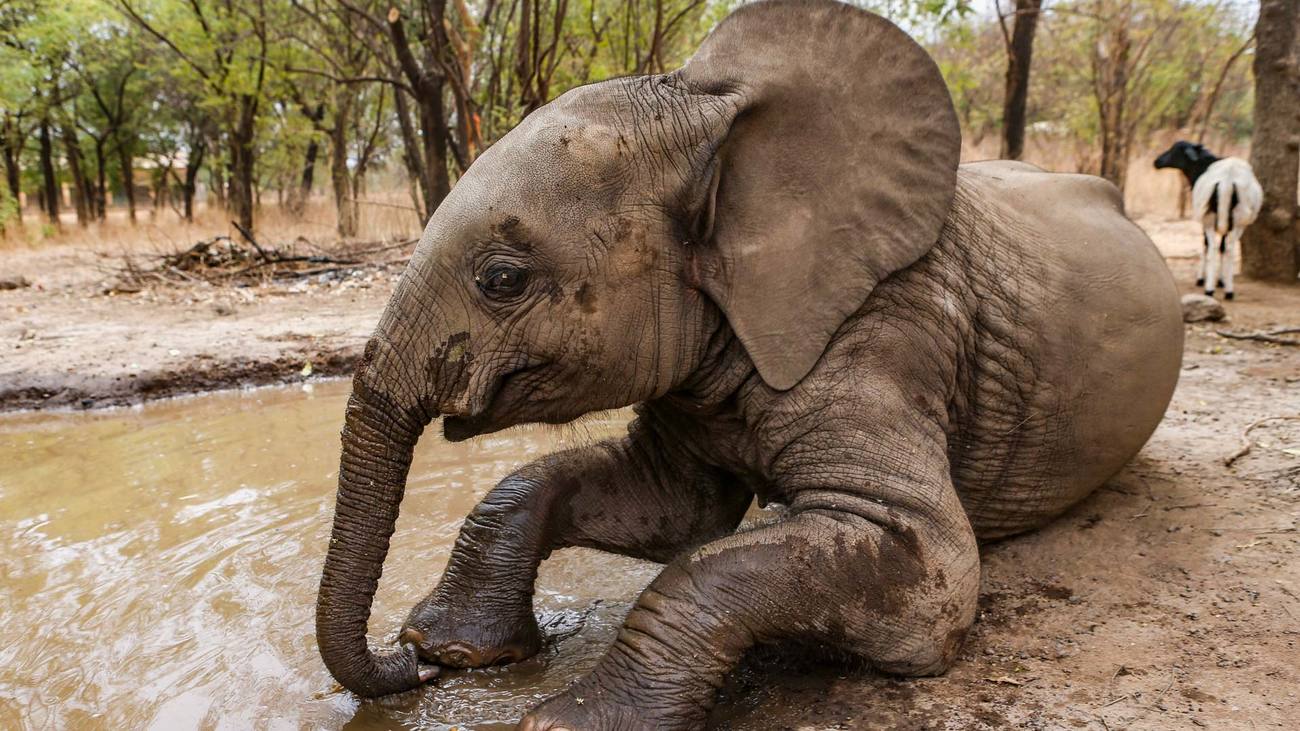Blog
These animals have some of the biggest eyes in the world
Read moreNania’s DNA results: what we now know

The day we had been dreaming about finally arrived: we received Nania’s DNA results. Is Nania’s family out there? Will we be able to reunite her with her herd – or even better, her mother? After three years of guessing, I finally held the report with the answers.
Nania was just three months old when she lost her herd and wandered into a village in Burkina Faso. She quickly won the affection of local community members, who generously pooled together funds to care for the calf until IFAW staff arrived for long-term support. Four caretakers named Idrissa, Souleymane, Salif and Abdoulaye took Nania under their wing, and together, we developed a specialized rehabilitation process that allows Nania to gradually develop independence.
In spring 2020, our team began collecting dung samples from wild elephants travelling through Deux National Park. Setting up camera traps and hearing the footsteps of herds in the distance, we watched full of wonder as the herds passed by week after week. One of these elephants may be Nania’s mother. Not long after our initial sample gathering, COVID-19 hit and it seemed like the whole world was put on pause. We had no way of knowing what the future held, but our team all agreed on one thing: we couldn’t give up hope.
In October 2020, we were finally able to ship 17 test tubes to a conservation biology center at the University of Washington in Seattle. With hurdles like power outages and possible contamination, the scientific soundness of the DNA was uncertain. Nevertheless, we waited patiently, praying that the samples were good enough to produce a result.
Four months later in February 2021, we finally received an answer about Nania’s lost family. I held the long-awaited DNA analysis report and read the opening sentence:
Our best inference is that Nania is the daughter of the elephant that produced dung sample 21.
My heart raced as I re-read the sentence over and over again. Nania’s mother was alive! The lab was able to analyze mitochondrial DNA from Nania and compare it to that found in the wild elephants’ dung. The report notes that there’s a small possibility that Elephant 21 is Nania’s half-sister, but more likely than not, she is truly her mother.
Checking the geographical data and collection date of sample 21, I realized that this elephant had passed within 200 meters of Nania's current home. The female had probably gone to the waterhole, a popular meeting place for the park's elephants. Maybe our camera traps had footage of her – was the beautiful night portrait that we recently captured Nania’s mother?
The DNA analysis also confirmed a second key piece of information: Nania and her herd are forest elephants. The majority of forest elephants have long been thought to live in the Congo Basin in Central Africa, but Nania’s DNA results and similar research prove that the species’ range extends to the Sahel countries where they live alongside savannah elephants.
Long considered a subspecies, the forest elephant was finally recognized by the scientific community as a full species (Loxodonta cyclotis) in March 2021 with the status of “critically endangered”. With this new knowledge, the search for Nania’s family becomes a part of an even larger story. Nania carries hope for the survival of her species. Her release back into the wild and reunion with her herd holds the potential for more genetic diversity and stronger populations of wild forest elephants.
With the good news of a DNA match, we decided that it is time to allow Nania to venture out at nightfall and explore her surroundings until midnight. Interactions with wild elephants are vital for Nania’s confidence and her assimilation back into the wild. We, her surrogate family, will continue to guide her back towards her own kind, because at IFAW we know that one animal can make all the difference.
- Céline Sissler-Bienvenue, IFAW Director France & Francophone Africa
Every problem has a solution, every solution needs support.
The problems we face are urgent, complicated, and resistant to change. Real solutions demand creativity, hard work and involvement from people like you.
Unfortunately, the browser you use is outdated and does not allow you to display the site correctly. Please install any of the modern browsers, for example:
Google Chrome Firefox Safari